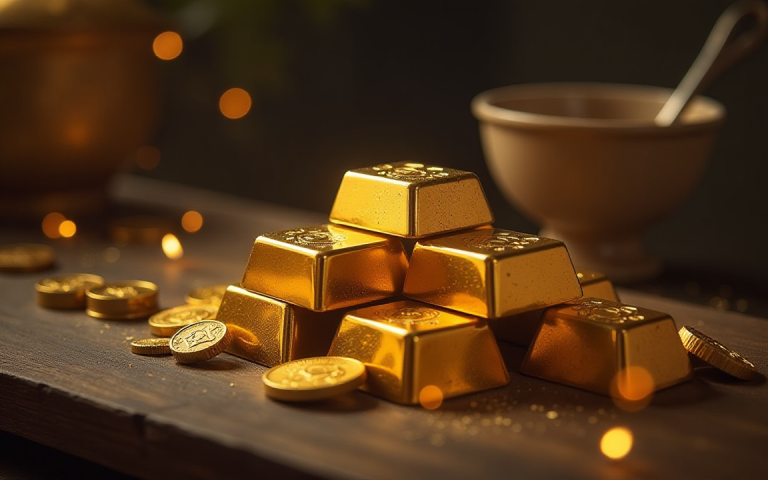Gold’s downside potential is expected to be limited and prices are likely to average $4,000 in the last quarter of 2025, ING Group said.
The bank further believes that gold prices are expected to average $4,100 per ounce in the first quarter of 2026.
“We remain positive on our gold outlook, despite the recent pullback in prices, with key supports, including central bank and safe haven demand, still in place,” Ewa Manthey, commodities strategist at ING Group, said in a report.
We view the correction as healthy rather than a trend reversal, with any further weakness likely to attract renewed interest from both retail and institutional buyers.
Outlook positive
Despite the recent easing of trade tensions, substantial geopolitical uncertainty remains, which continues to fuel demand for safe assets, according to Manthey.
In October, gold reached a new high, surpassing $4,300 per ounce, driven by a rush of retail investor interest.
However, the price has since fallen back below $4,000 per ounce. This decline is attributed to investors taking profits, a more positive mood regarding risk, and unclear investor strategies during the continuing US government shutdown.
Withdrawals from gold-backed exchange-traded funds coincided with the recent price pullback.
However, ING’s outlook on gold remains positive. The bank anticipates further upside in 2026, supported by favorable macro tailwinds and underlying fundamentals.
Despite a recent dip, gold prices have surged over 50% year-to-date.
Key support factors, such as sustained central bank and safe-haven demand, are still present. Furthermore, as the US Federal Reserve is expected to continue cutting interest rates, a resumption of ETF buying is anticipated.
Central banks continue purchases
Central banks continue to be a crucial source of demand for gold.
In the third quarter, central bank gold purchases accelerated, reversing the trend of slowing purchases seen in the preceding two quarters.
They acquired an estimated 220 tonnes of gold during 3Q, marking a 28% increase over the second quarter’s total and exceeding the five-year quarterly average by 6%, according to World Gold Council data.
In the third quarter, the National Bank of Kazakhstan was the foremost purchaser of gold.
Additionally, the Central Bank of Brazil made its first gold acquisition since 2021. As of 2025, Poland is the leading gold buyer, having accumulated 67 tonnes.
And central banks are still hungry for more gold.
The central bank of South Korea is reportedly mulling the addition of gold to its reserves, a move that would mark its first such action since 2013, according to ING Group.
“Key downside risk for gold looking ahead would be if central banks decided to sell their reserves,” Manthey said.
However, we believe the shift in central banks’ purchases has been more structural and they will continue to add gold to their reserves, as strategies on currency reserves shift.
ETF holdings at high
This year’s record rally in gold has been significantly bolstered by exchange-traded funds (ETFs), with investment demand accelerating during the third quarter.
Inflows into gold-backed ETFs hit a record high last quarter. Investors in these ETFs added 222 tonnes of gold, bringing global holdings close to the all-time high set in November 2020.
“Despite the recent withdrawals, we expect ETF buying to resume as the US Fed is likely to continue cutting interest rates,” Manthey added.
Rates traders assign a probability of over 70% to an interest-rate reduction occurring in December.
However, Manthey believes that a significant market downturn represents a key downside risk for prices, potentially compelling investors to liquidate their gold holdings for necessary cash.
Other downside risks include reduced safe haven demand amid easing geopolitical tensions. Central banks selling their gold reserves poses another risk to our outlook.
The post Despite pullback, ING remains positive on gold; sees $4,100/oz average in Q1 2026 appeared first on Invezz

